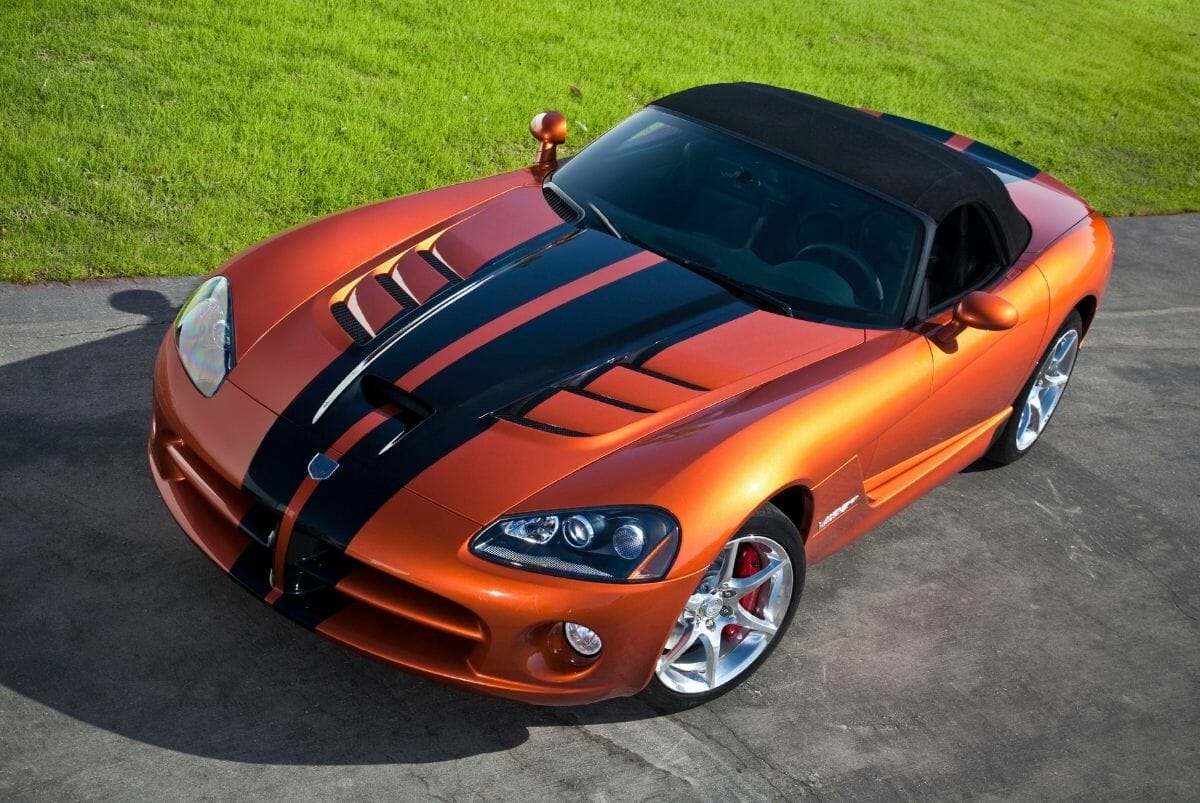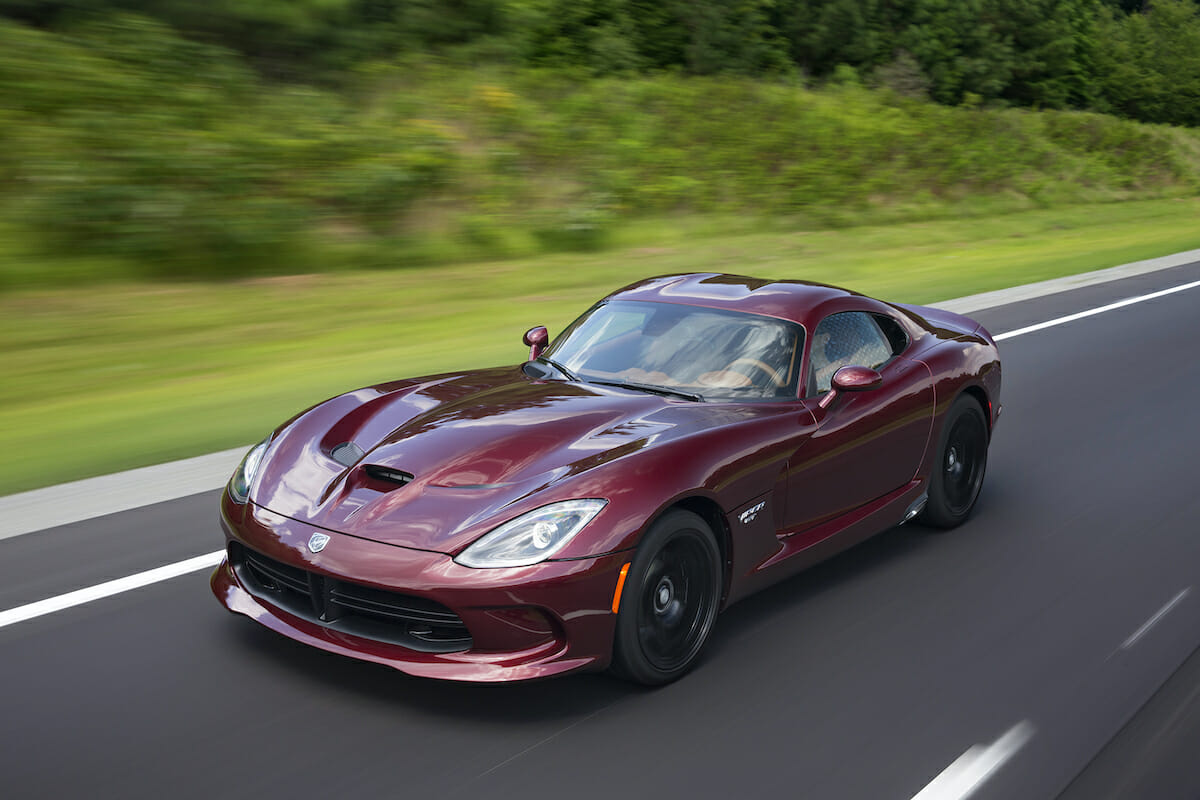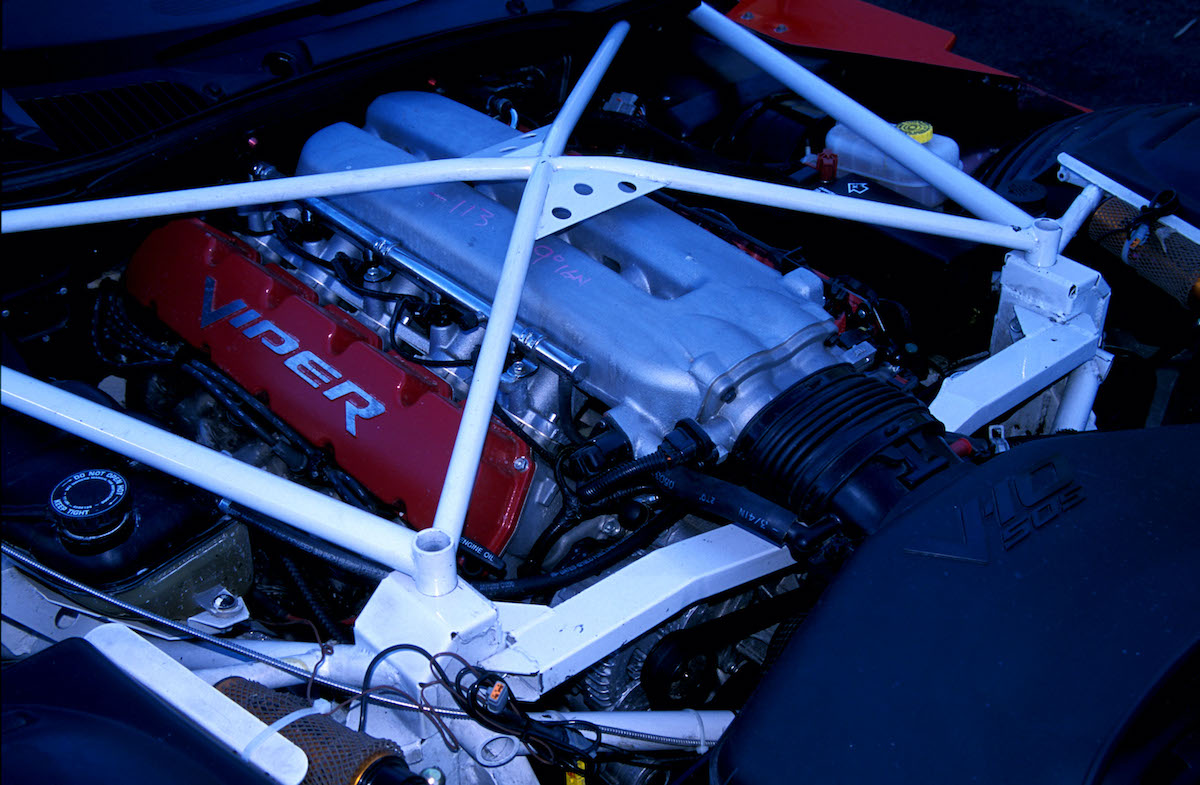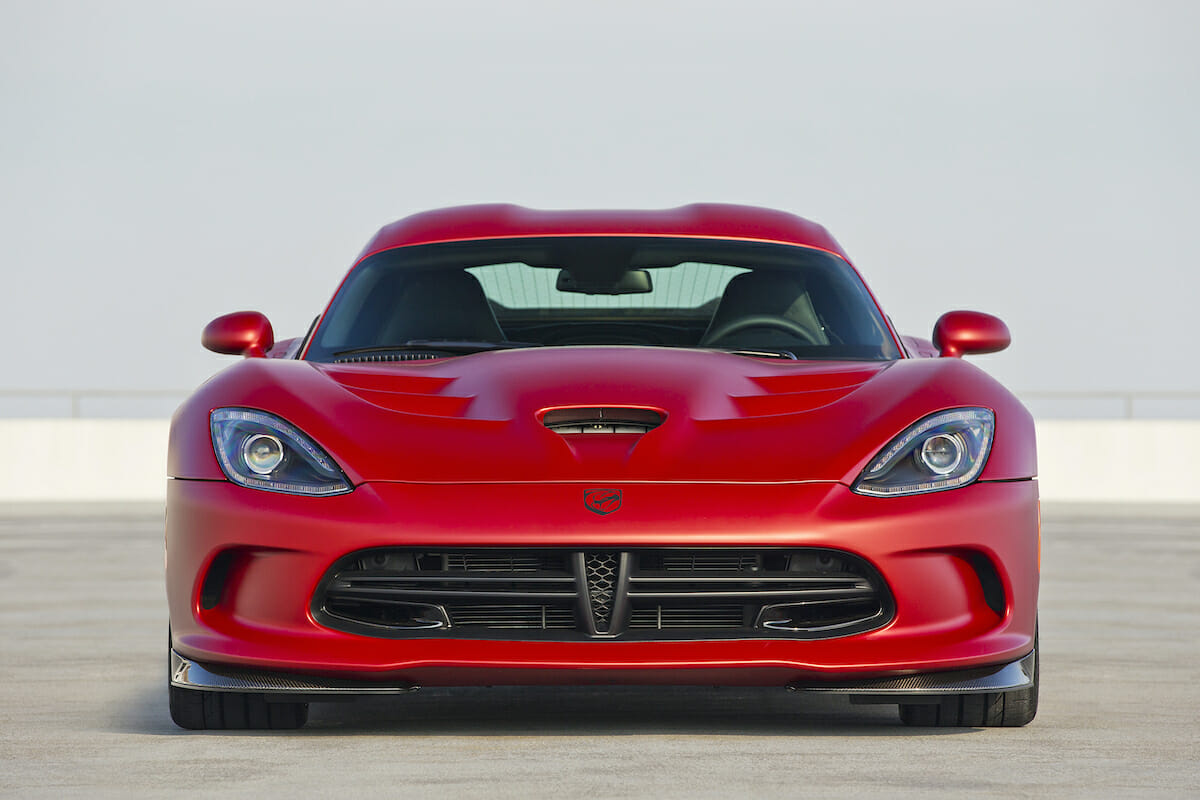
Although the sun set on the Viper in 2017, Dodge’s sporty ride had a motor that left a performance legacy.
Imagine minding your own business in the shop headquarters at Chrysler in the late ’80s with one task on your mind: Make a better truck engine. You work tirelessly with your engineer buddies trying to mold together the perfect engine to power the larger Ram-series trucks. Through perseverance and determination, you tape a couple of extra cylinders to a 5.9L Magnum V8, and your iron block engine is ready for production. You’d probably be brimming with excitement about what could be next. Only to see your engine requisitioned by the boys at Dodge for some “special” project. You’d get it back after they were done with it.
Once the demons over at Dodge got this newly produced 8.0L V10 in their hands, they worried little about the hurt feelings of engineers, and they enlisted the help of their contacts over at Lamborghini. (Chrysler owned Lamborghini from 1987 to 1994, so there were plenty of available resources.)
Chief Power Engineer Dick Winkles helped transform the heavy iron workhorse into a much lighter aluminum-constructed engine with a longer (nearly 100 mm) stroke. The V10 monster also had an external cooling manifold attached to the block similar to F1 applications. At the time, the most burgeoning tech was added to the Viper project, including sequential multipoint fuel injection and dual throttle bodies with individual intake plenums. It shared zero parts with the heavy truck engine by the time they were done and it was two liters larger than its distant Lamborghini Diablo cousin at 25% the price. That engine was unleashed on the world in the 1992 Dodge Viper, screaming past Heavy-Duty Ram trucks with iron brothers tucked underneath their mild-steel hoods.
Dodge Viper: First-Generation (1991-’95)
Then, thanks to designer Tom Gale and his crew, Dodge built a vehicle around that engine, designing a long hooded two-seater with an obvious connection to the poisonous viper snake. Much like the poison from the Viperidae Serpentes, the light 8.0L V10 was the venom stuffed into the 3,285 lb monster of a sportscar. The symphony now a complete arrangement with 400 horsepower and 465 ft/lbs of torque, the 1992 Dodge Viper saw 0-60 times at 4.6 seconds, 0-100 times in 9.2 seconds, and a quarter-mile time of 12.6 seconds! The Viper engine was mean and violent –– just like a real snake, and it was a strong showing for Dodge, swallowing Corvettes whole.

Engine Troubles & Viper Woes
“What goes up, must come down,” the great Isaac Newton once said, and in a way cursed us all from staying in a state of flight. The Viper engine wasn’t impervious to the curse either, with a few issues uncovered by consumers owning the car. The newly produced engine had some poor piston rings that caused the car to consume oil and ultimately resulted in engine replacement while the vehicle was under warranty.
Paying $52,000 for a limited production vehicle, we’d be pretty upset. After paying $100,000 after the dealer addendum, we’re sure some owners were less than impressed. The issues continued, unfortunately, with leaks from the thermostat gaskets and problems with power steering pump failures in earlier Viper iterations.
Second, Third & Fourth-Generation Updates
In the second-generation Viper engine (SR II) the same 8.0L V10 pumped the numbers up to 450 horses and 490 pound-feet of torque from the same engine with the 1995 offering being the last year of forged pistons until 2012.
In 2003, the Viper’s engine was beefed up a bit more — as if it wasn’t already insane — to 8.3L with a larger bore and stroke at 102.4 mm and 100.6 mm, respectively, boasting 510 horsepower and 535 ft/lbs of torque. The wrappings of the engine were growing up a bit too, with some functional styling changes. On top of adding more power, the Viper lost weight too –– almost 600 pounds, with 500 of it in engine weight and 80 in chassis weight. No Vipers were produced in 2007 with preparations surround the 4th generation release.
As the technology continued to advance, the power-to-weight ratios continued to benefit. The fourth-generation updates read like a storybook for the engine lover and felt a bit like Dodge was starting to take things more seriously with the Viper. First and chiefly, the power was bumped up to a ridiculous 600 ponies with 560 back-punching torques. Along with a new high-flow air intake, larger valve, and better-flowing heads, the Viper engine was introduced to cam-in-cam variable valve timing for the camshaft on the exhaust cam. This new profile opened up a few new opportunities for the V10, which included increasing the rev limit by 300 RPMs.

Cam-in-cam variable valve timing is a genius technology in and of itself, but the Viper’s V10 was the first pushrod engine to employ truly Variable Valve Timing (VVT) using this cam-in-cam method for the exhaust valves. So, what is it? Well, after Dodge had some difficulty with trying to fit a Dual Overhead Cam (DOHC) setup to the V10 for future models, they worked with Mechadyne International to come up with a camshaft that changes the phase of the exhaust cams versus the intake cams without losing power at idle and low speed.
This high-performance cam in block technology allowed them to increase the rev limit to 6,100 RPMs and push out 600 horsepower. The reason they only adjusted the exhaust cam lobes is because adjusting the intake side would only increase torque –– something the Dodge Viper needed no adjustments to, despite making its peak torque at 5,000 RPMs.
With some development assistance from McLaren and a new engine controller from Continental, the distinction in looks was almost nill. This fourth-generation V10 would sport a new vented engine cover that would make all your SR I, SR II, and ZB I friends jealous, but other than that, it looked the same. The Chrysler Company paired this updated beast with a new transmission and got rid of a crossover in the exhaust that was trying to cook drivers alive with cockpit heat soak.
Fifth Generation: End of an Era
The Viper engine had come far by 2012. It was now an all-aluminum 8.4L V10 pushing 640 horsepower and 600 ft/lbs of torque. It would sling you down the road to 60 in 3.5 seconds with a top speed of 208 mph. There was still magic in this gargantuan engine, but by 2014 dealers were discounting the Viper by $15,000 and even promised 2015s would be cheaper.
In 2015, as a final gasp for combustion-giving breath, the Viper was pushed to 645 horsepower and a promise of 20 miles per gallon on the highway. But it wasn’t enough. With the inability to align with the Federal Motor Vehicle Safety Standard 226, which regulates the potential of a driver being ejected from their vehicle, the final chapter in the Viper’s book was written.
In 2017, the Connor Assembly Plant closed along with the production of the Viper.
Dodge Viper Engine Helped Power an American Icon

While the Viper car had many different name changes and never really sold all that great, it represented absolute American insanity –– in a good way. The 1980s was a wild time for auto manufacturers, and the Viper is the offspring to prove it. While the sun has set on the Viper, there isn’t a car enthusiast that doesn’t turn their head toward a passing Viper and point out what they’d just seen. And what they just saw and heard, was a masterpiece.
Photos: Dodge
